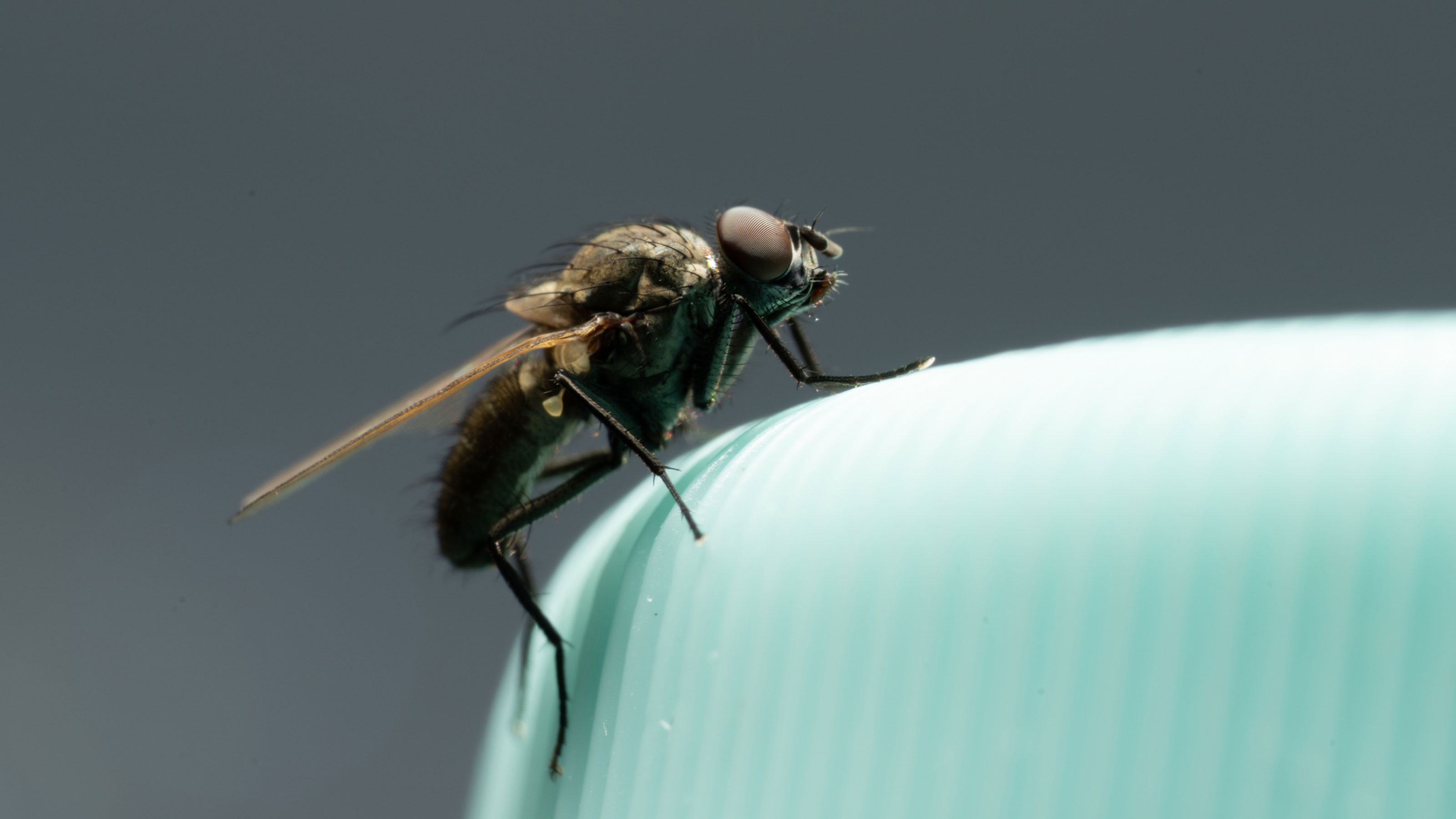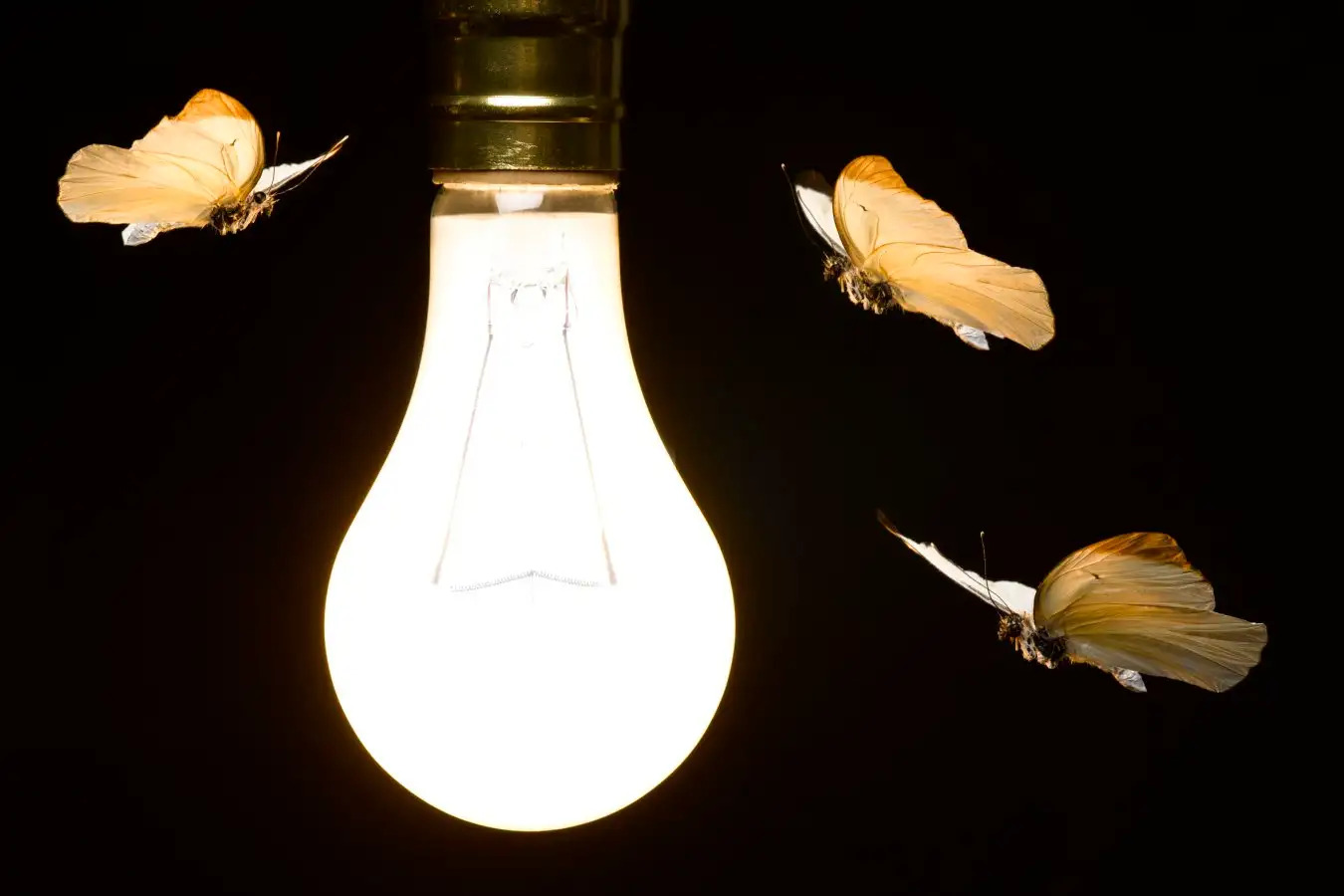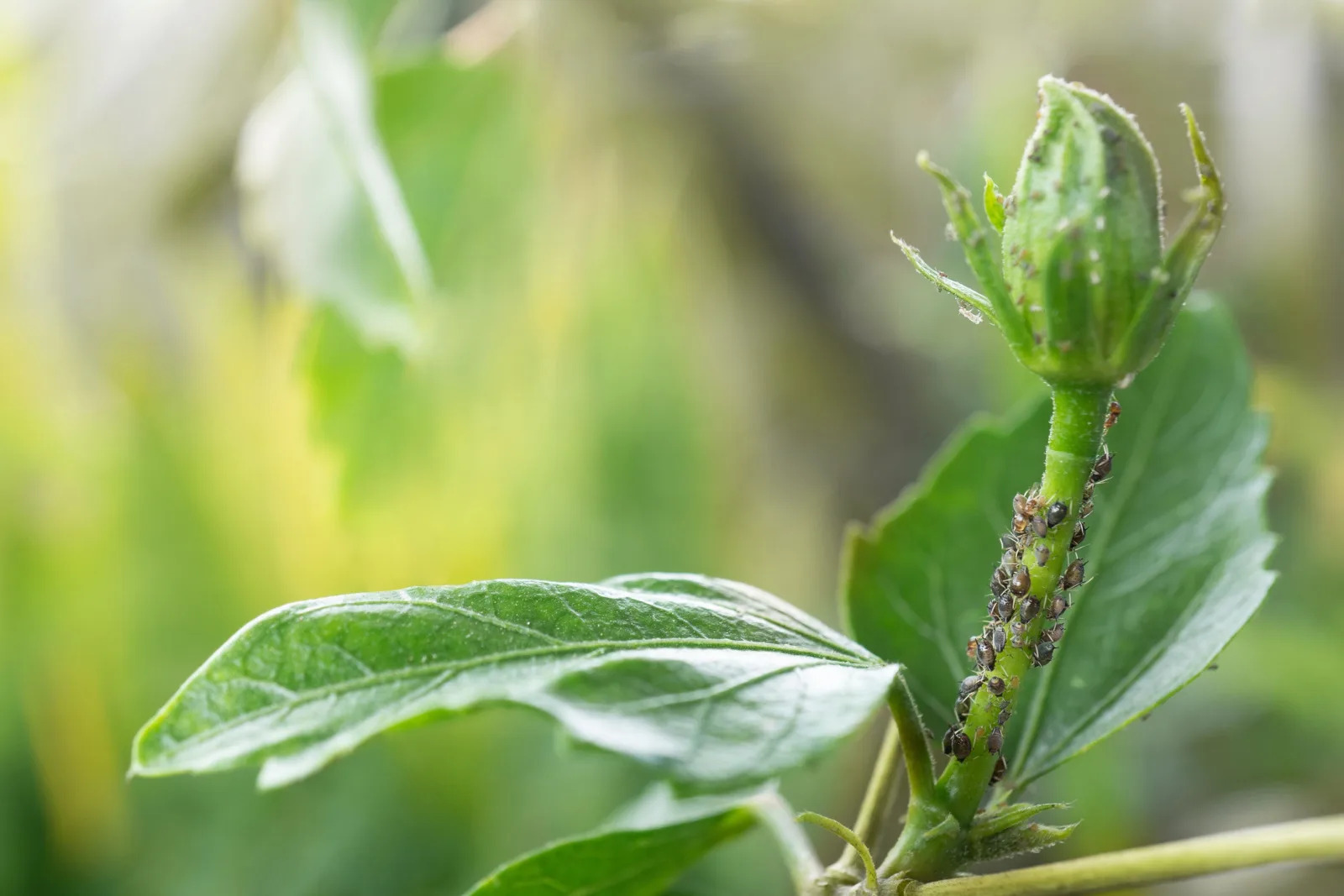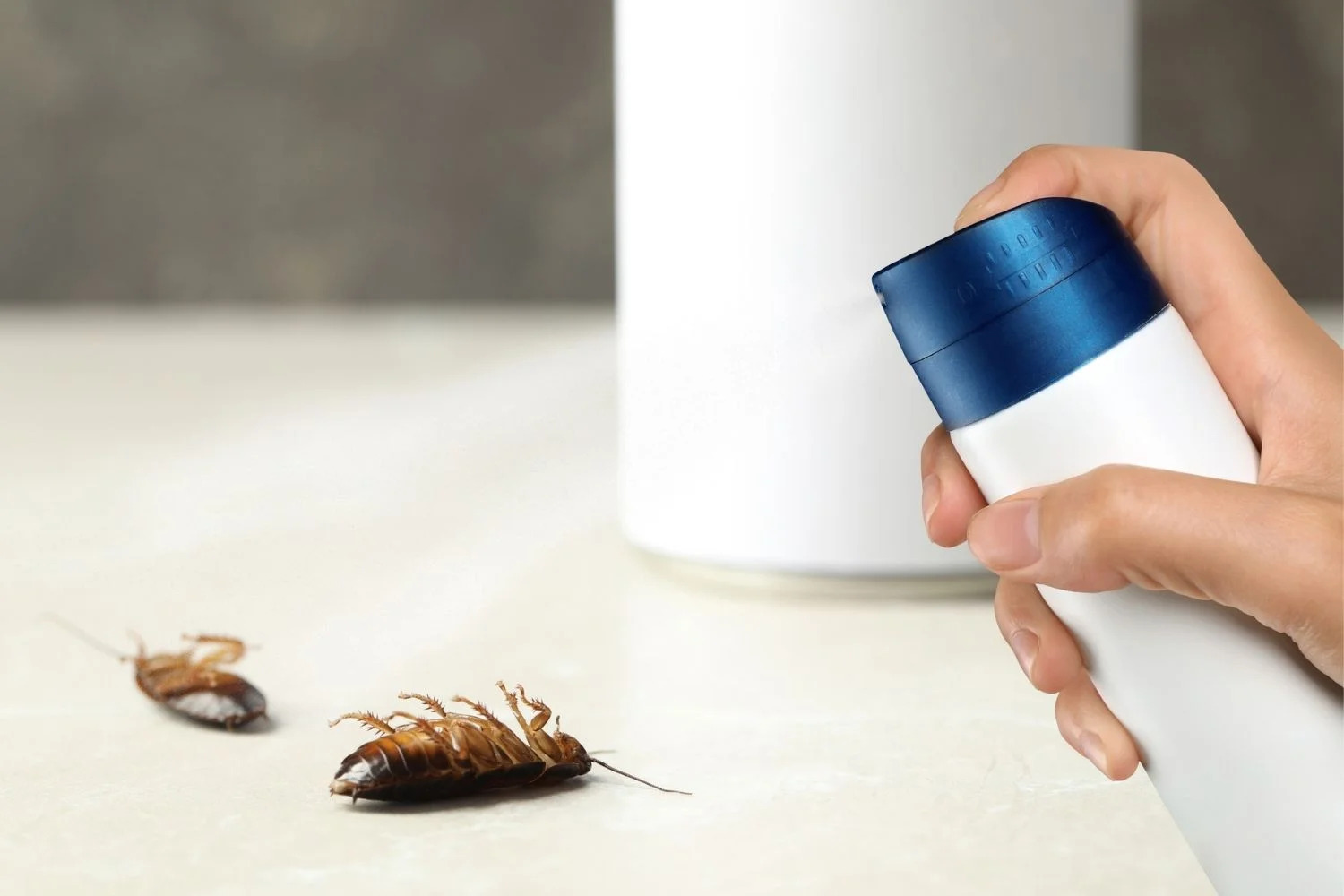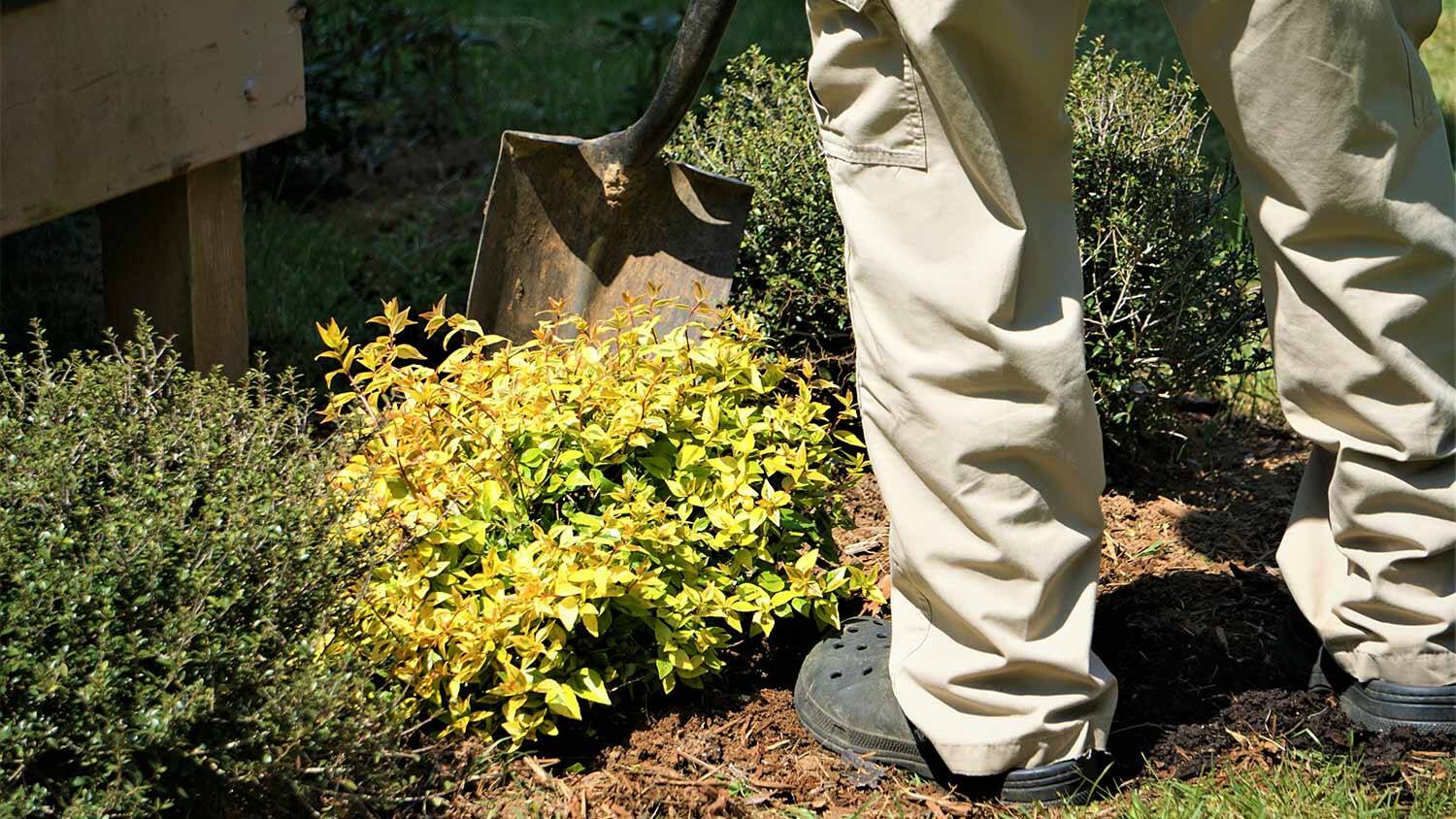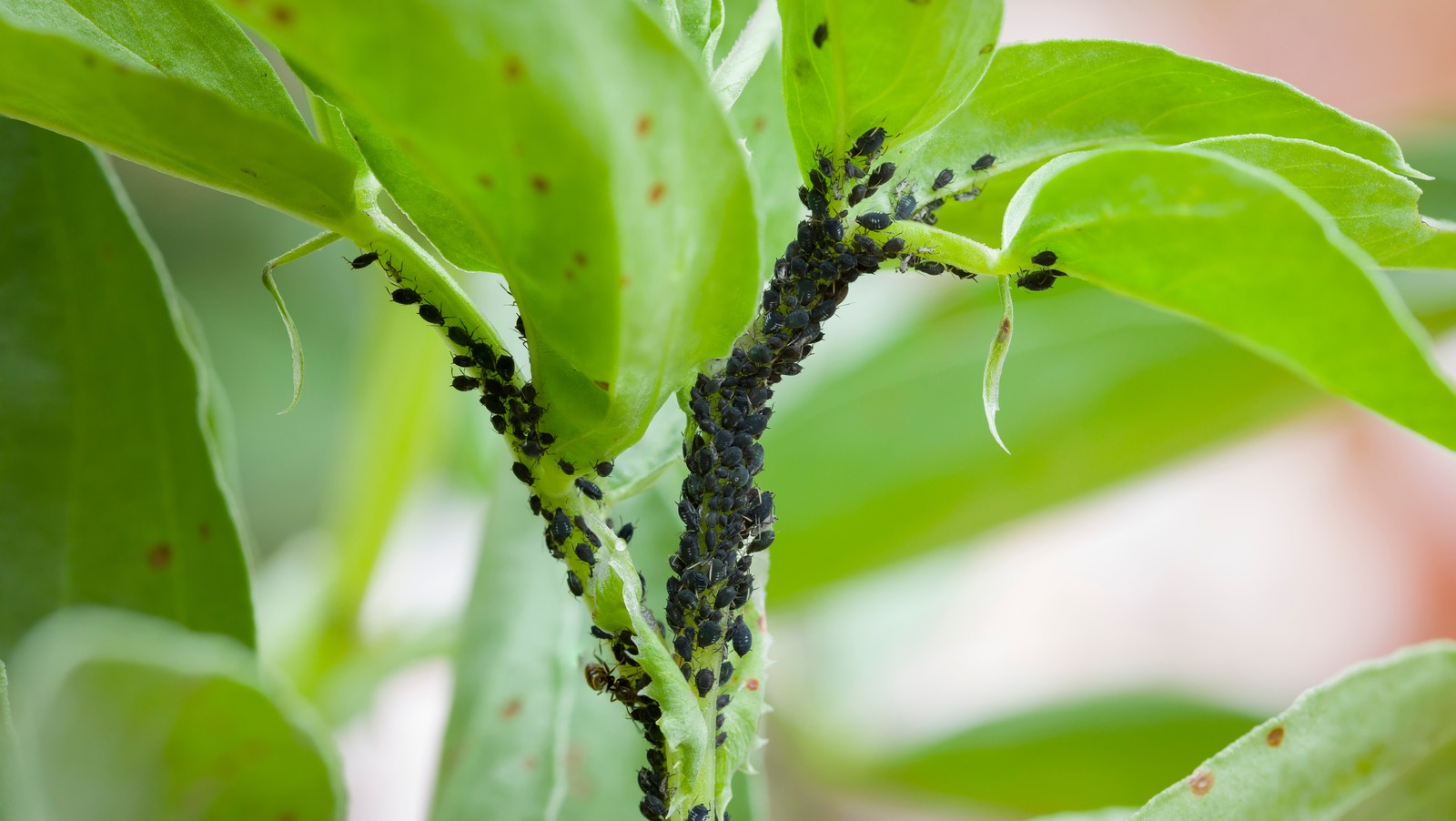Home>Gardening Tips and Tricks>Problem Solving>How To Get Rid Of Garden Insects
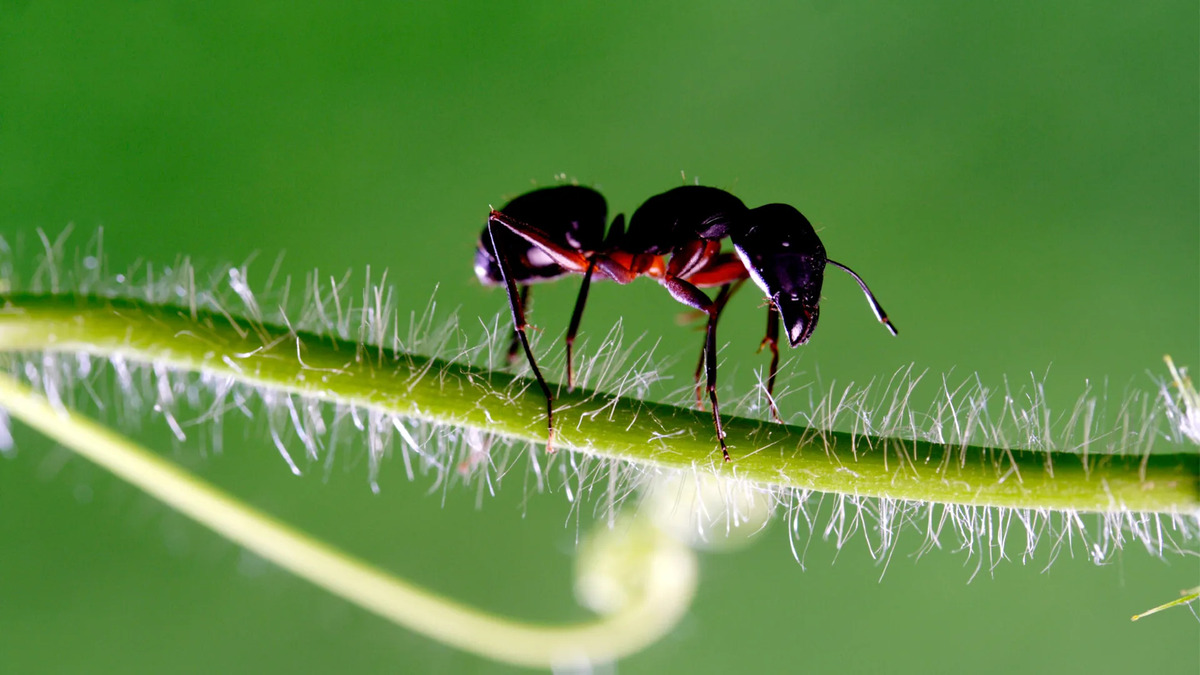

Problem Solving
How To Get Rid Of Garden Insects
Modified: January 29, 2024
Learn effective problem-solving techniques to eliminate garden insects and create a pest-free environment. Discover expert tips and remedies to get rid of unwanted pests and protect your plants.
(Many of the links in this article redirect to a specific reviewed product. Your purchase of these products through affiliate links helps to generate commission for Chicagolandgardening.com, at no extra cost. Learn more)
Table of Contents
Introduction
Garden insects can wreak havoc on your plants, causing damage and impacting their overall health. Whether it’s aphids feasting on your roses or beetles munching on your vegetable leaves, dealing with garden insects is a common challenge for many gardeners. While some insects are beneficial for your garden, others can quickly escalate into full-blown infestations.
But worry not! There are various effective methods you can employ to get rid of garden insects and protect your plants. In this article, we will explore natural and organic approaches to control garden insects, as well as preventive measures you can take to minimize infestations.
Understanding the different types of insects that commonly attack garden plants is the first step towards effective pest control. By familiarizing yourself with their appearance, behavior, and lifecycle, you will be better equipped to identify and tackle the issue head-on.
Next, we will delve into the various natural ways you can control garden insects. These methods rely on organic ingredients and techniques that are safe for both your plants and the surrounding environment.
In some cases, natural remedies may not be sufficient to eliminate an infestation. That’s where organic pest control products come into play. We will explore these products, discussing their benefits and how to use them effectively to combat stubborn garden insects.
An integrated pest management (IPM) approach combines different pest control strategies to minimize the use of chemicals and prioritize long-term solutions. We will discuss the implementation of IPM techniques in your garden and how they can help maintain a balance between controlling insects and preserving the ecosystem.
Companion planting is another valuable tool in your garden insect control arsenal. By strategically selecting specific companion plants that repel or deter insects, you can create a natural barrier to protect your vulnerable plants.
Lastly, we will explore preventive measures that can help ward off garden insect infestations before they take hold. These preventive strategies include regular monitoring, proper plant care, and maintaining a well-balanced and diverse garden ecosystem.
By gaining a comprehensive understanding of garden insects, implementing natural control methods, and taking proactive prevention measures, you can maintain a healthy and vibrant garden, free from destructive pests. So let’s dive in and discover how to get rid of garden insects!
Understanding Common Garden Insects
Before delving into how to get rid of garden insects, it is important to familiarize yourself with the most common culprits. By understanding their appearance, behavior, and lifecycle, you can better identify and address potential infestations in your garden.
Aphids are tiny, pear-shaped insects that come in various colors, such as green, black, and brown. They suck the sap from plants, causing leaves to curl, distort, or yellow. These pests reproduce rapidly, so early detection is crucial in preventing widespread damage.
Caterpillars are the larval stage of butterflies and moths. While some species are harmless, others like tomato hornworms and cabbage loopers can devour the leaves of your plants. Look for their distinctive chewing damage and frass (insect droppings) as signs of their presence.
Beetles, such as Japanese beetles and Colorado potato beetles, can quickly defoliate plants. They have hard shells and can be various colors, often with distinct patterns. Check for skeletonized leaves and consider handpicking them or using other control methods.
Whiteflies are small, winged insects that resemble tiny moths. They feed on plant sap and can cause yellowing, wilting, and stunted growth. They also excrete a sticky substance called honeydew, which can lead to the growth of black sooty mold.
Thrips are slender, tiny insects that are difficult to see with the naked eye. They feed by sucking plant sap, causing silver or bronze streaks on leaves. They can also transmit diseases, making them particularly harmful to certain plant species.
Spider mites are not true insects but arachnids. They are extremely small and mostly found on the undersides of leaves. Spider mites feed on plant sap, leading to yellowed and stippled foliage. They are notorious for their ability to multiply rapidly, especially in hot and dry conditions.
These are just a few examples of common garden insects, but there are numerous other pests that can cause damage to your plants. By identifying the type of insect, you can tailor your pest control approach accordingly.
Keep in mind that not all insects in your garden are harmful. Some, like ladybugs, lacewings, and bees, are beneficial and play a crucial role in pollination and pest control. Therefore, it is important to distinguish between the good and the bad insects.
Now that you have a better understanding of common garden insects, you can move on to implementing effective pest control methods. Let’s explore natural ways to combat these pesky pests and protect your garden!
Identifying the Type of Garden Insects
Identifying the specific type of garden insect infestation is crucial for selecting the most appropriate control methods. By understanding the unique characteristics of each insect, you can effectively target your approach and minimize the impact on beneficial insects.
Start by closely observing the affected plants and the signs of damage. Look for telltale signs such as holes in leaves, chewed edges, discoloration, wilting, or sticky residue. In some cases, you may even be able to spot the insects themselves.
If you can see the insects, take note of their size, shape, color, and movement patterns. Are they small and aphid-like, or larger and beetle-like? Gathering this information will help you narrow down the possibilities and identify the pest accurately.
For insects that are difficult to spot, examine the leaves, stems, and underneath plant surfaces. Look for eggs, larvae, or evidence of insect feeding, such as frass or webbing, to help determine the type of pest present.
If you’re still unsure about the exact identification, consider reaching out to your local cooperative extension service or master gardeners for assistance. They can provide guidance and help you identify the specific garden insect based on your location and plant species.
Additionally, there are various online resources, books, and field guides that can aid in identifying garden insects. These resources often provide detailed descriptions, images, and information on the specific pests, allowing you to compare and match them to the insects in your garden.
Being able to identify the type of garden insect infestation is important because different pests require different control methods. For example, spraying insecticidal soap may be effective against soft-bodied insects like aphids, while using row covers can help protect plants from caterpillars.
Furthermore, by accurately identifying the pest, you can determine if it poses a serious threat to your plants or if it is a minor nuisance. This knowledge can influence your decision on whether to control the pests or simply tolerate them, especially if they are not causing significant damage.
Remember, correctly identifying the type of garden insect infestation is the first step towards effective pest control. By understanding the specific pest you’re dealing with, you can select targeted control methods and minimize the impact on your garden ecosystem. Now, let’s move on to exploring natural ways to control garden insects!
Natural Ways to Control Garden Insects
When it comes to controlling garden insects, natural methods are not only effective but also safe for the environment and beneficial insects. By employing these techniques, you can keep your garden free from harmful pests while maintaining a healthy ecosystem.
One of the simplest and most accessible natural methods is handpicking. Regularly inspect your plants and manually remove any visible insects or larvae. This method is particularly effective against larger pests like caterpillars and beetles. Dispose of the insects by dropping them into a bucket of soapy water or by squishing them.
Encouraging beneficial insects to your garden is another effective natural control method. Ladybugs, lacewings, and parasitic wasps are all excellent natural predators that feed on garden pests. To attract them, you can plant nectar-rich flowers, provide water sources, and avoid the use of broad-spectrum pesticides.
Creating physical barriers can also prevent insect infestations. For instance, row covers made of lightweight fabric can be used to protect plants from flying insects like moths and butterflies. Floating row covers are supported by hoops or stakes and can be easily lifted for watering and plant care.
Additionally, you can utilize homemade insecticidal sprays to control garden insects. Garlic and chili pepper sprays are known to repel a wide range of pests. To make these sprays, simply blend garlic cloves or chili peppers with water, strain the mixture, and spray it on affected plants. Reapply after rain or as needed.
Introducing biological controls is another natural method of pest control. Nematodes, for example, can target and eliminate specific soil-dwelling pests like grubs and cutworms. These microscopic organisms can be purchased from garden centers and applied to the soil as directed.
Furthermore, practicing good garden hygiene can help prevent insect infestations. Remove any fallen foliage, dead plants, or plant debris that could attract pests and provide breeding grounds. Regularly weed your garden and keep it well-maintained to minimize hiding spots for pests.
Another effective natural technique is companion planting. By pairing certain plants together, you can repel or deter specific insects. For instance, planting marigolds alongside tomatoes can help repel aphids and nematodes. Research companion planting combinations that work well for the pests you’re dealing with.
Lastly, don’t forget the power of water. Using a strong stream of water from a garden hose can dislodge and remove many insects from your plants. This method is particularly useful for controlling aphids and spider mites.
By utilizing these natural methods, you can control garden insects without relying on harmful chemicals. These approaches not only protect your plants but also ensure a thriving and balanced garden ecosystem. Now, let’s explore the use of organic pest control products for more stubborn garden insect infestations.
Using Organic Pest Control Products
While natural methods are effective for many garden insect infestations, sometimes stronger measures are necessary to control stubborn pests. Organic pest control products offer a safe and environmentally friendly alternative to conventional chemical pesticides.
One commonly used organic pest control product is insecticidal soap. Made from natural ingredients such as fatty acids, insecticidal soap works by suffocating soft-bodied insects like aphids, mites, and whiteflies. It is safe for beneficial insects and can be sprayed directly on affected plants.
Another effective product is neem oil, derived from the neem tree. Neem oil acts as a natural insect growth regulator, disrupting the lifecycle of pests and deterring them from feeding. It is particularly useful against leaf-chewing insects, scales, and mealybugs.
Diatomaceous earth (DE) is a fine powder made from fossilized remains of diatoms. It works by piercing the exoskeletons of insects, causing them to dehydrate and die. DE is effective against crawling insects like ants, slugs, and beetles. Apply it around the base of the plants or as a barrier in problem areas.
Pyrethrin, derived from the chrysanthemum flower, is a natural insecticide that attacks the nervous system of insects, leading to paralysis and death. It is effective against a wide range of garden pests, including aphids, beetles, and caterpillars. Use pyrethrin-based products sparingly and follow label instructions carefully.
Essential oils, such as peppermint, rosemary, and thyme, have insect-repellent properties. Dilute these oils with water and spray them on plants or use them in a homemade bug repellent spray. They can help repel a variety of pests and add a pleasant aroma to your garden.
Organic insecticides containing spinosad are effective against pests like caterpillars, thrips, and fruit flies. Spinosad is derived from a naturally occurring soil bacterium and disrupts the nervous system of insects. It is safe for beneficial insects when used according to instructions.
Before using any organic pest control products, it is important to read and follow the instructions carefully. Use protective clothing and equipment as recommended and apply the products during non-windy conditions to prevent drift. Additionally, always conduct a patch test on a small portion of the plant to ensure it doesn’t have any adverse effects.
Organic pest control products provide an effective and safe alternative to conventional chemical pesticides. By utilizing these products, you can target specific pests while minimizing harm to beneficial insects and the environment.
Now that we’ve explored organic pest control products, let’s move on to discussing the implementation of integrated pest management techniques for comprehensive garden insect control.
Implementing Integrated Pest Management Techniques
Integrated Pest Management (IPM) is an approach to pest control that focuses on long-term, sustainable solutions. By combining various strategies, IPM effectively manages garden insect populations while minimizing the use of harmful chemicals. Let’s explore some key components of implementing IPM techniques in your garden.
1. Monitoring: Regularly inspect your plants for signs of pest activity. Look for damage, eggs, or adult insects. Early detection allows for prompt action and prevents infestations from spiraling out of control.
2. Set Action Thresholds: Determine the level of pest activity that warrants intervention. Not all pests require immediate action, and tolerating a certain level of damage can be acceptable. Consider factors such as plant health, pest reproduction rate, and tolerance for damage when setting thresholds.
3. Cultural Controls: Create conditions that promote plant health and reduce pest susceptibility. This includes proper watering, adequate sunlight, and optimal nutrition. Healthy plants are more resistant to pest attacks, as their natural defenses are stronger.
4. Biological Controls: Utilize natural enemies of garden insects to keep pest populations in check. This may involve introducing beneficial insects like ladybugs or creating habitats to attract birds or predatory insects. Encouraging biodiversity in your garden helps maintain a balanced ecosystem.
5. Mechanical Controls: Physical methods can be employed to remove or deter pests. This includes handpicking insects, using traps or barriers, or employing techniques like pruning to remove infested plant parts. These methods are effective for larger pests or localized infestations.
6. Chemical Controls as a Last Resort: If all other methods fail, targeted pesticide use may be necessary. However, it is important to select low-toxicity, organic options and apply them sparingly and accurately. Always follow label instructions and consider their impact on beneficial insects and the environment.
7. Record-Keeping: Maintain a record of pest activity, control measures, and their effectiveness. This helps you track patterns, evaluate the success of your pest management efforts, and make informed decisions in the future.
Implementing IPM techniques requires active observation and response to pest issues. By combining multiple strategies, you create a comprehensive pest management plan that is effective, sustainable, and environmentally conscious.
Now, let’s explore companion planting and how it can be used to repel garden insects in a natural and chemical-free manner.
Companion Planting to Repel Garden Insects
Companion planting is a gardening technique that involves strategically planting certain plants together for their symbiotic benefits. One of the advantages of companion planting is its ability to naturally repel garden insects without the use of chemicals. Let’s explore some common companion planting combinations that can help keep pests at bay.
1. Marigolds: Marigolds are known for their strong scent, which repels a wide range of insects, including aphids, nematodes, and mosquitoes. Plant marigolds around your vegetable garden or intersperse them among susceptible plants to deter pests.
2. Nasturtiums: Nasturtiums act as a natural trap crop, attracting pests like aphids and whiteflies away from other plants. These colorful flowers also produce a mustard oil that repels many garden insects. Plant them around vegetables or near susceptible plants to divert pests.
3. Basil: Basil has a strong aroma that repels flies, mosquitoes, and certain types of beetles. Plant basil near susceptible crops to deter these pests. Additionally, basil can enhance the flavor of tomatoes and peppers when planted together.
4. Sage: Sage is effective against cabbage moths, carrot flies, and slugs. Plant it around brassicas, carrots, and other susceptible plants to discourage these pests. Sage also attracts beneficial insects like bees and butterflies.
5. Rosemary: Rosemary is known for repelling several pests, including cabbage moths, carrot flies, and mosquitoes. It also attracts pollinators like bees and butterflies. Plant rosemary near cabbage family plants, carrots, or in outdoor seating areas to keep insects at bay.
6. Chives: Chives produce a strong scent that deters aphids, carrot flies, and Japanese beetles. Plant chives near roses, carrots, and other susceptible plants to keep these pests away. Chives also attract beneficial insects like hoverflies.
7. Garlic: Garlic is a powerful insect repellent with strong antifungal properties. It deters aphids, moths, and other pests. Plant garlic around roses and other susceptible plants or use it to create a natural barrier in your garden.
8. Mint: Mint has a strong aroma that repels a variety of pests, including ants, aphids, and cabbage moths. Plant mint near susceptible plants or use it as a border to deter insects. However, it’s important to contain mint in pots or planters, as it can become invasive.
Remember, companion planting is not a foolproof method of pest control, and results may vary depending on factors such as plant variety and regional climate. It is best to experiment with different combinations and observe the results in your own garden.
By incorporating companion planting techniques, you can create a diverse and insect-repellent garden. The combination of plants works together to naturally deter pests, promoting a healthy and thriving garden ecosystem.
Now, let’s move on to exploring preventative measures that can help minimize garden insect infestations before they occur.
Preventing Garden Insect Infestations
Prevention is key when it comes to managing garden insect infestations. By implementing proactive measures, you can create an environment that discourages pests and reduces the likelihood of an infestation. Let’s explore some effective preventative strategies to keep your garden healthy and pest-free.
1. Proper Plant Selection: Choose plant varieties that are known to be resistant to common garden pests in your region. This reduces the risk of attracting specific insects that can cause damage to your plants.
2. Crop Rotation: Rotate the placement of crops within your garden each year. This helps prevent the buildup of pest populations that target specific plants. Insects that emerge in the spring may not find their preferred host plants if they are placed in a new location.
3. Healthy Soil: Maintain healthy soil by regularly adding organic matter such as compost or well-rotted manure. Healthy soil supports strong plant growth, making them less susceptible to pest attacks. It also encourages beneficial soil microorganisms that help control pests.
4. Adequate Spacing: Properly space your plants to provide good air circulation. Crowded plants not only encourage the spread of diseases but also create favorable conditions for pests to thrive. Adequate spacing can also make it easier to inspect plants for signs of insect activity.
5. Irrigation Management: Avoid overwatering your plants, as excessive moisture can attract pests, such as slugs or snails. Instead, water plants at the base and in the morning to allow foliage to dry during the day, minimizing the risk of fungal diseases and insect infestations.
6. Mulching: Apply organic mulch around your plants to help conserve moisture and suppress weed growth. This helps create a barrier that makes it difficult for certain insects to reach the plant. Choose mulches like straw or wood chips that are less likely to harbor pests.
7. Cleanliness: Remove plant debris, fallen leaves, and weeds regularly from your garden. These can provide hiding places and breeding grounds for pests. Keeping your garden clean and free from debris reduces the opportunities for insects to establish themselves.
8. Attract Beneficial Insects: Plant flowers that attract beneficial insects, such as ladybugs, lacewings, and parasitic wasps. These insects prey on garden pests and help keep their populations in check.
9. Physical Barriers: Use physical barriers like netting or row covers to protect susceptible plants from insect pests. These barriers can prevent pest access and reduce the need for pesticide use.
10. Regular Inspections: Regularly inspect your plants for early signs of pest activity. Look for chewed leaves, discolored foliage, or insect eggs. Early detection allows for prompt intervention and prevents small pest problems from turning into major infestations.
By implementing these preventative measures, you can significantly reduce the risk of garden insect infestations. Creating a garden environment that is less attractive to pests promotes the overall health of your plants and reduces the need for reactive pest control methods.
Now that we’ve covered preventative measures, it’s time to wrap up this comprehensive guide on how to get rid of garden insects. Armed with the knowledge and strategies outlined here, you can maintain a thriving and pest-resistant garden for seasons to come.
Conclusion
Garden insects can cause significant damage to our beloved plants, but with the right knowledge and strategies, we can effectively control and prevent infestations. By understanding common garden insects and identifying the specific pest we’re dealing with, we can tailor our control methods accordingly.
Natural ways to control garden insects, such as handpicking, attracting beneficial insects, and using homemade insecticidal sprays, provide effective and environmentally friendly alternatives. Incorporating organic pest control products can help tackle more stubborn pests while minimizing harm to beneficial insects.
Implementing integrated pest management (IPM) techniques is crucial for sustainable garden insect control. This approach combines monitoring, cultural and biological controls, as well as mechanical and chemical controls as a last resort, ensuring long-term management strategies.
Companion planting is another valuable tool in repelling garden insects naturally. By strategically planting compatible species together, we can create a garden ecosystem that deters pests and attracts beneficial insects.
Prevention is the key to avoiding garden insect infestations. By selecting resistant plant varieties, practicing crop rotation, maintaining healthy soil, and implementing proper spacing and irrigation techniques, we can create an inhospitable environment for pests.
Regular garden inspections, cleanliness, and the use of physical barriers further contribute to preventing infestations. Being proactive and observant allows us to detect pest activity early on and take appropriate action.
With these techniques and strategies in our gardening toolbox, we can protect our plants from the destructive effects of garden insects. By incorporating natural and organic methods, we can create a healthy and thriving garden that is in harmony with nature.
So roll up your sleeves, put on your gardening gloves, and embark on the journey of managing and controlling garden insects. With knowledge, diligence, and a little help from nature, you can protect your garden and enjoy the beauty and bounty it brings.
